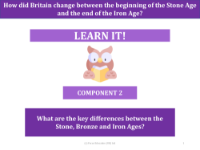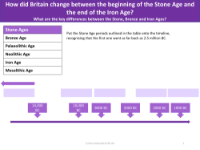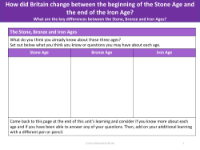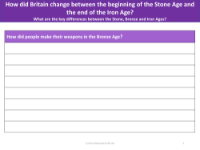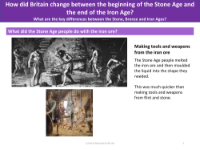What are the key differences between the stone, bronze and iron ages? - Teacher notes
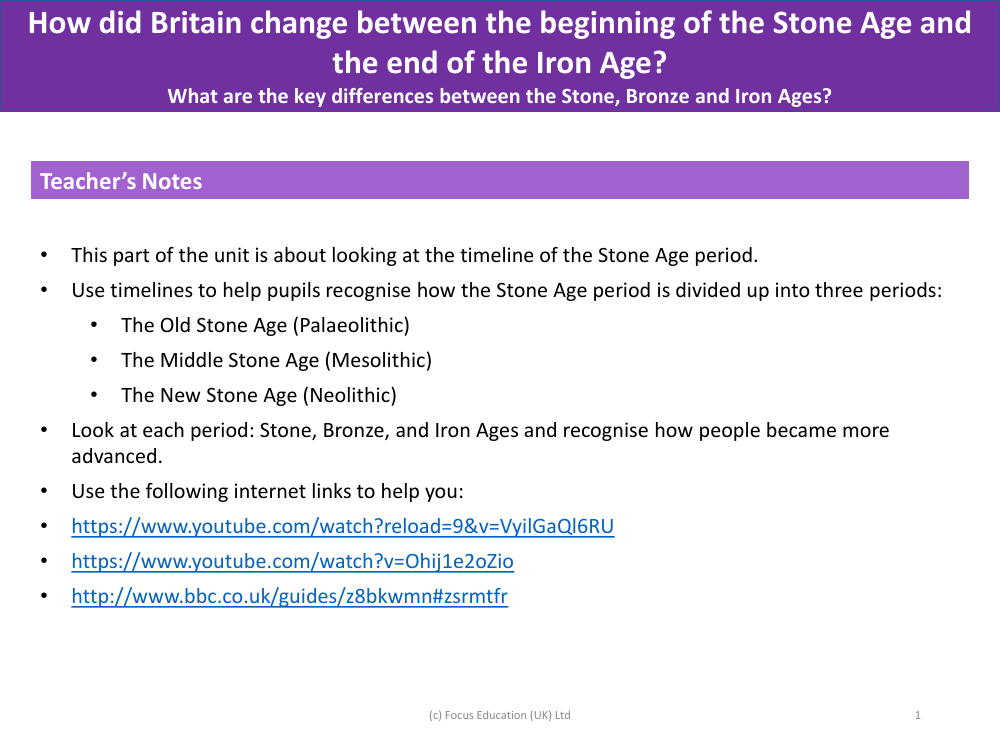
History Resource Description
The Stone Age, a vast period of prehistory, is divided into three distinct periods: the Old Stone Age (Palaeolithic), the Middle Stone Age (Mesolithic), and the New Stone Age (Neolithic). Each era signifies different levels of human development and technological advancement. During the Palaeolithic period, humans were primarily nomadic hunters and gatherers. They used simple stone tools and lived in small groups, adapting to the Ice Age climates. The Mesolithic period saw the development of more sophisticated stone tools and the beginnings of permanent settlements, as the climate became warmer and more stable. Finally, the Neolithic era was marked by the advent of farming, domestication of animals, and the construction of megalithic monuments, indicating a significant shift towards settled communities and agriculture.
Following the Stone Age, the Bronze Age introduced the use of metal, specifically bronze, which is an alloy of copper and tin. This period is characterised by the emergence of metalworking skills, leading to the creation of more durable tools, weapons, and the introduction of metal jewellery and ornaments. Societies became more organised, with the rise of trade networks and more complex social structures. The Iron Age succeeded the Bronze Age, heralding the use of iron, a metal that was stronger and more readily available than bronze. Ironworking led to the production of superior weapons and tools, contributing to significant changes in agriculture, warfare, and daily life. The Iron Age also saw the development of larger settlements and hill forts, indicating increased territoriality and social stratification within communities.
